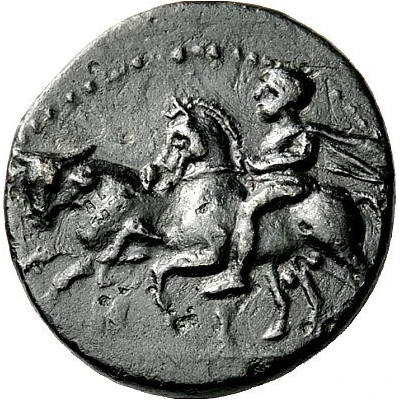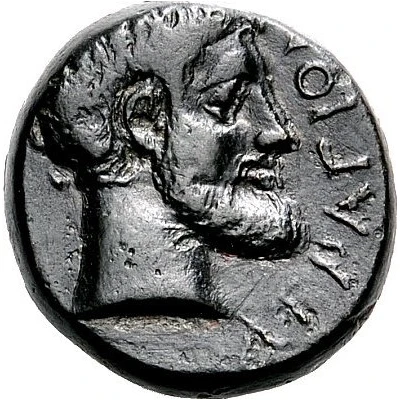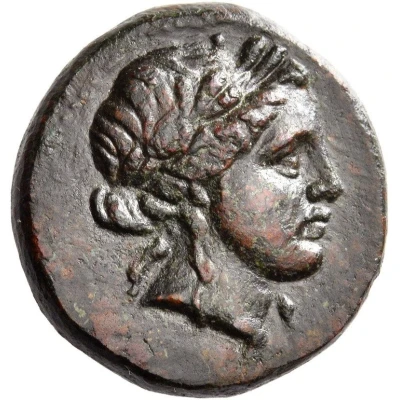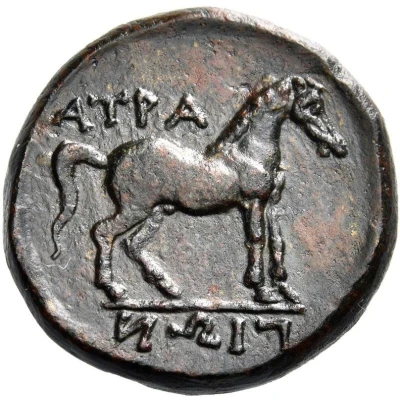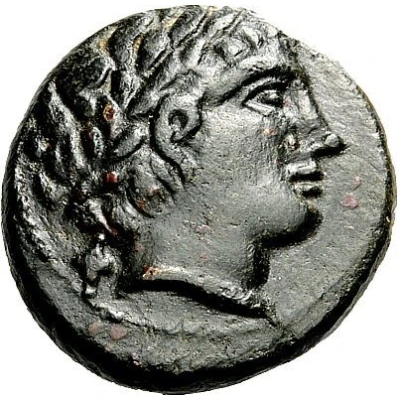
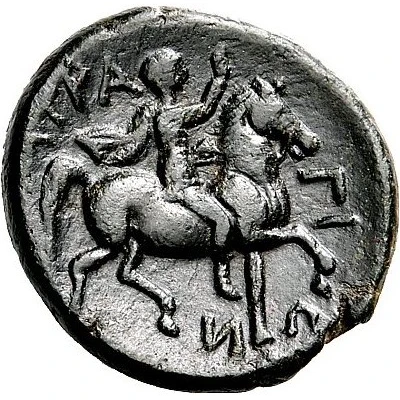

© Nomos AG
Tetrachalkon 300 BC - 200 BC
| Bronze | 7.29 g | 20.0 mm |
| Issuer | Atrax (Thessaly) |
|---|---|
| Type | Standard circulation coin |
| Years | 300 BC - 200 BC |
| Value | Tetrachalkon (1⁄12) |
| Currency | Drachm |
| Composition | Bronze |
| Weight | 7.29 g |
| Diameter | 20.0 mm |
| Shape | Round (irregular) |
| Technique | Hammered |
| Demonetized | Yes |
| Updated | 2024-10-10 |
| Numista | N#170916 |
|---|---|
| Rarity index | 95% |
Reverse
Horseman, in military dress with his right hand raised in salute, riding horse trotting to right
Script: Greek
Lettering: ΑΤΡΑ Γ Ι ΩΝ
Interesting fact
The Tetrachalkon coin was used in ancient Thessaly, a region in central Greece, and features a unique design. On one side, it depicts the head of a gorgon, a mythical creature with snakes for hair and a powerful gaze that could turn people to stone. On the other side, it shows a horse, which was a symbol of strength and power in ancient Greece. This coin was used for everyday transactions and was valued at 4 drachmas, which was a significant amount at the time.
